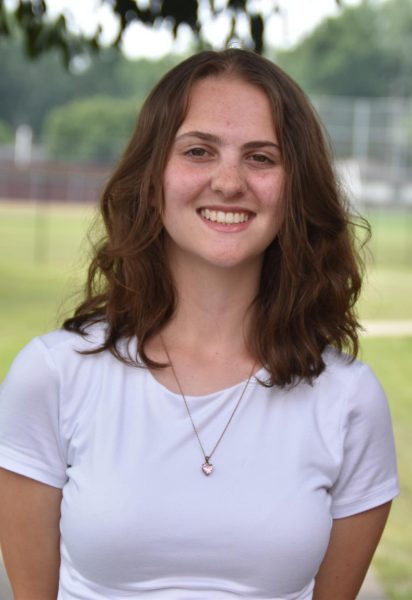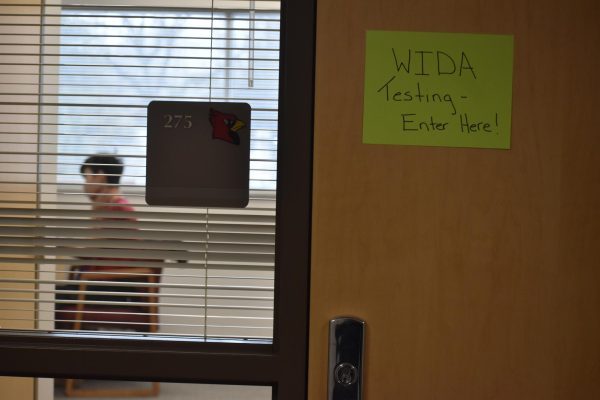Numbers dwindling
A.P. classes are facing the consequences from the COVID-19 pandemic
Juniors Esther Li, Rem Tial and Sophie Wiley in Rachel Brunsell’s A.P. Environmental Science class blow bubbles as part of a lab. The class used their bubbles to represent parental care in different populations.
For the past two years, A.P. classes have been experiencing a dramatic drop in attendance due to the ramifications of the COVID-19 pandemic.
The number of students enrolled in A.P. classes dropped by nearly 100 students after the 2020-2021 school year. Although overall numbers are currently climbing back to where they were before the pandemic, there are a number of A.P. teachers and students alike who are still experiencing the lingering effects of Covid today.
Senior Lucas Freeman believes that the stigma behind higher level classes is what has been turning students away from them for the past few years.
”You hear so many horror stories from A.P. classes, even though I think some of the hardest classes in this school are (dual credit) classes…,” Freeman said. “I think a lot of people are uninformed about what exactly it means. They’re like ‘Oh, it’s just college credit.’ People just don’t know, I think is the biggest thing.”
This year, A.P. Biology teacher Amanda Schnepp has the smallest A.P. class attendance that she’s ever experienced, with a total of just eight A.P. Biology students. This is nearly a fourth of what she had last year.
Schnepp believes that her drop in attendance was caused by students not receiving an appropriate introduction to biology due to the pandemic.
“This year’s juniors were freshmen taking biology during the horrible, hybrid, hellacious year of being at school maybe twice a week and then doing things online,” Schnepp said. “I feel like they don’t have a lot of interest in biology because they didn’t get true, good biology their freshman year because of the hybrid situation.”
With the hit that her A.P. class has taken this year, Schnepp hopes that this year’s trend is not one that will be repeated.
“I hope this is a weird year,” Schnepp said. “I hope that it’s just an anomaly and that within next year or two years from now we’ll be back to better enrollment in D.C. and A.P. classes. I think students are kind of closing some doors for themselves if they don’t push themselves to take those higher level classes.”
Science teacher Rachel Brunsell’s A.P. Environmental Science class is an example of an A.P. class that kept its typical attendance rates throughout the pandemic. However, Brunsell noticed that during the pandemic, her students didn’t have the same motivation as in previous years.
“I think my numbers are similar, but I noticed last year the effort was less,” Brunsell said. “I had my lowest scores I think I’ve had in a while last year.”
This year, however, Brunsell has actually seen a slight uptick in her A.P. class attendance, and she is optimistic for what this year will bring for her class.
“This school year has been a positive, optimistic start,” Brunsell said. “I think people got out whatever they needed to last year and we can have a better year this year.”
Principal Brian Knight says there are plans in place to encourage students who aspire to go to college to take A.P. and D.C. classes in order to increase their success rates in college.
“Students who take an AP. course in high school… not even necessarily pass the course… the percentage of those students going to college is much higher,” Knight said. “The ‘on track’ after their freshman year in college is much higher, the remediation they need when they get to college is much lower… so we’ve got to start trying to target students who say ‘Hey, I want to go to college.’”
Knight is trying to focus on students with a higher likelihood of going to college, such as students with higher grades and 21st century scholar students, and more actively encourage them to pursue A.P. classes than was done during the years after the pandemic.
“I think there’s times over the past few years where we haven’t pushed as much as we normally do with some of that, just because we know its been difficult and we don’t want to overwhelm students because they’ve been overwhelmed with a lot of other things in the past couple of years,” Knight said. “So we’ve gotta get back to tracking better and looking at kiddos we think have potential and then talking to the students, talking to their families, talking about the purpose of taking upper level courses.”

Hey there! My name is Sophie Barker, and I can’t believe I’m a senior this year! I’m taking a position back in writing this year for the Features...











